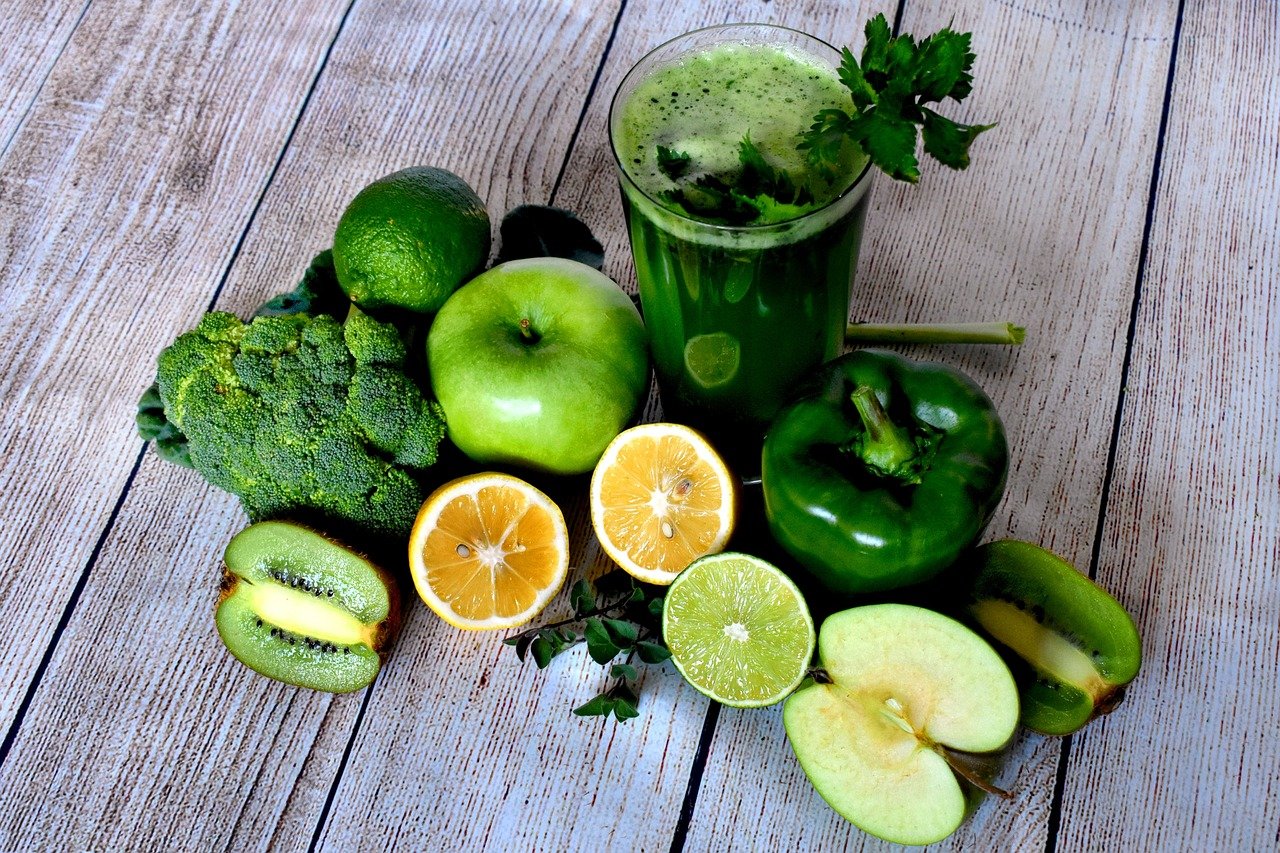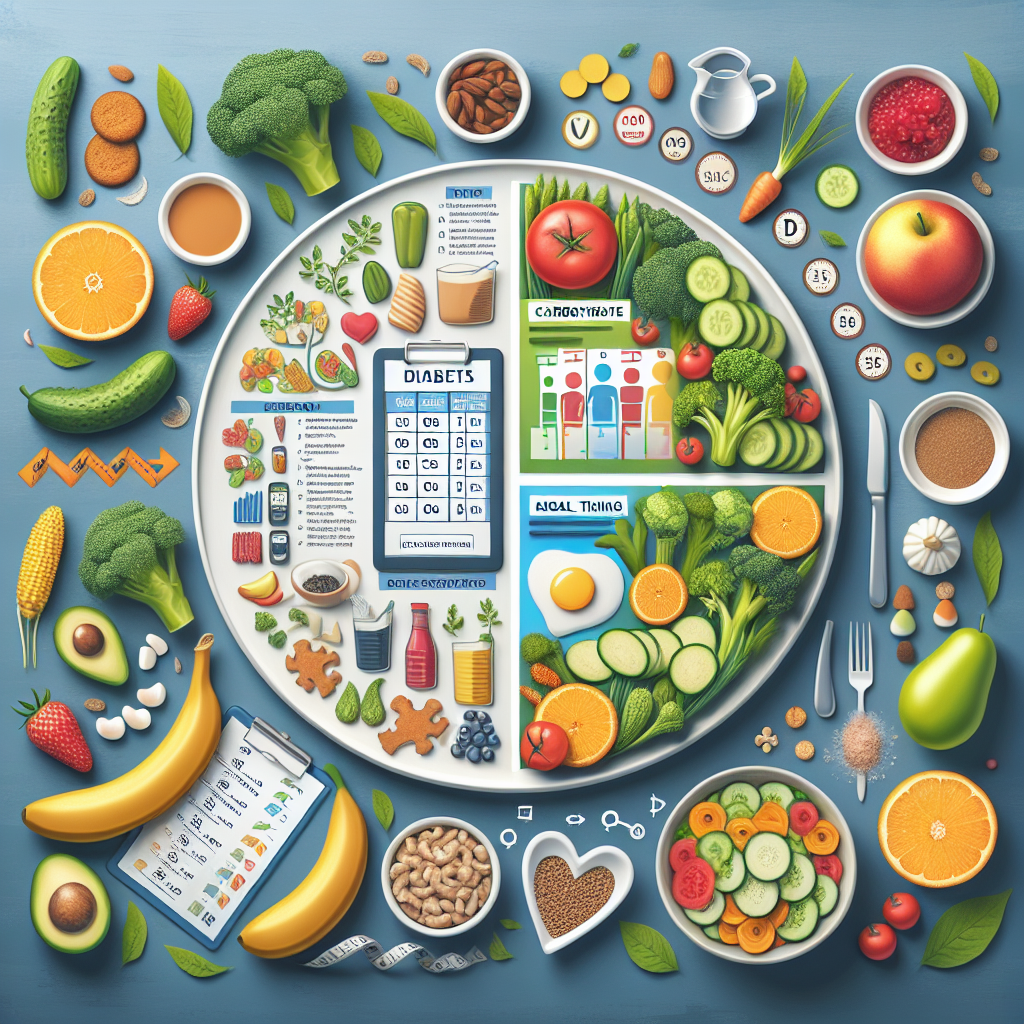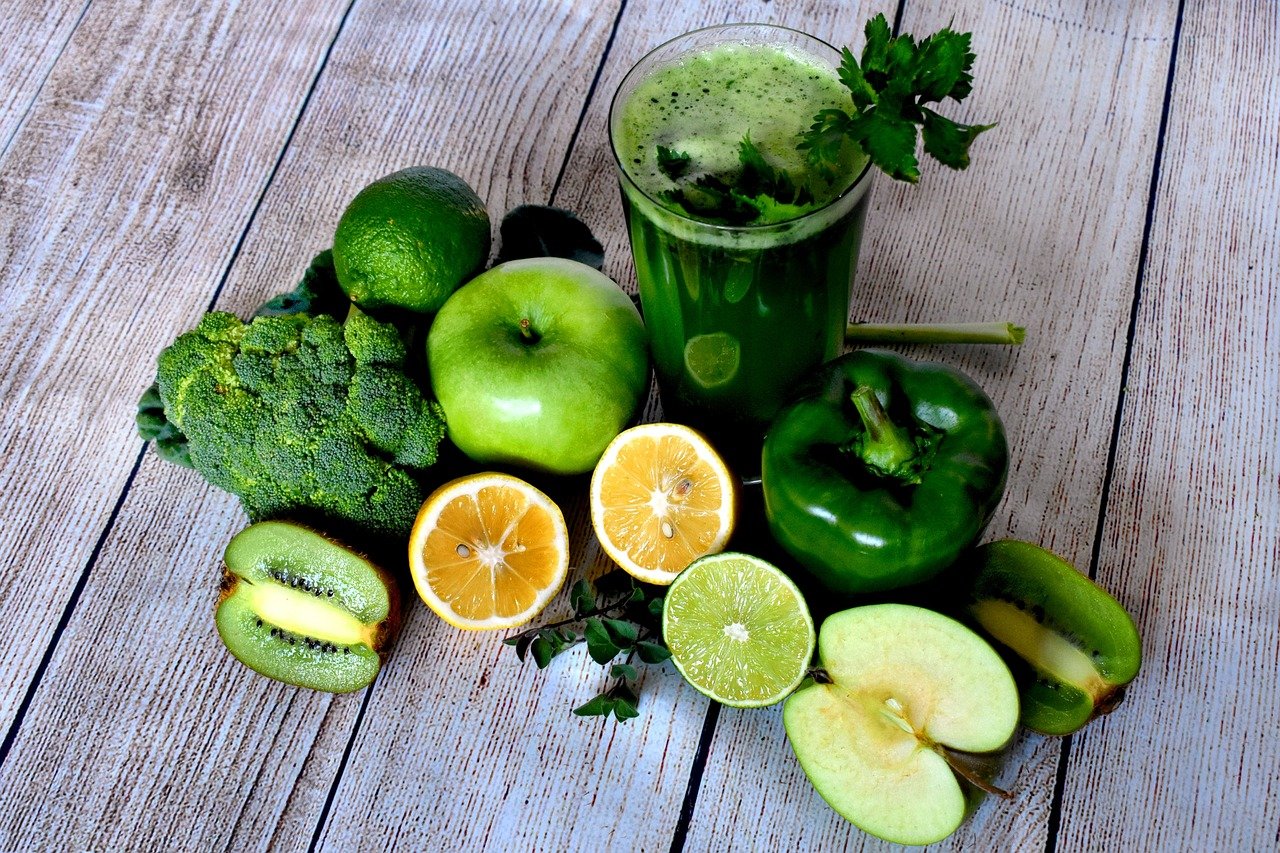Are you looking to plan a balanced diabetic-friendly vegan meal but not sure where to start? Look no further! In this article, we will guide you through the process of creating a delicious and nutritious meal that is not only suitable for diabetics but also adheres to a vegan lifestyle. From choosing the right ingredients to incorporating essential nutrients, we have got you covered. So let’s get started and explore the wonderful world of diabetic-friendly vegan cooking!

Choosing Nutrient-Dense Plant-Based Foods
Eating a nutrient-dense plant-based diet is an excellent way to support your overall health and manage diabetes. When selecting foods for your meals, it’s important to focus on variety and include a wide range of fruits and vegetables. These colorful foods are packed with essential vitamins, minerals, and antioxidants that can help boost your immune system and protect against chronic diseases. Aim for a mix of leafy greens, berries, citrus fruits, cruciferous vegetables, and other vibrant options to ensure you’re getting a diverse array of nutrients.
In addition to fruits and vegetables, incorporating whole grains and legumes into your diet is essential. Whole grains like quinoa, brown rice, and whole wheat pasta provide fiber, B vitamins, and minerals that are beneficial for blood sugar control. Legumes such as beans, lentils, and chickpeas are excellent sources of protein, fiber, and healthy carbohydrates. Including these foods in your meals can help keep you feeling satisfied and provide a steady release of energy throughout the day.
To further enhance the nutrient content of your meals, don’t forget to include a variety of nuts and seeds. These tiny powerhouses are rich in healthy fats, protein, and essential minerals like magnesium and zinc. Adding a handful of almonds, walnuts, or chia seeds to your breakfast or as a snack can help promote heart health and stabilize blood sugar levels. They also add a delicious crunch to your meals and provide a source of satiety.
When it comes to plant-based protein sources, there are numerous options to choose from. Foods like tofu, tempeh, and seitan are popular meat substitutes that can be used in a variety of dishes. They offer a good amount of protein without the saturated fat and cholesterol found in animal products. Other plant-based proteins include legumes (mentioned earlier), quinoa, hemp seeds, and edamame. Experimenting with these protein sources can add variety and flavor to your meals while ensuring you’re meeting your nutritional needs.
Considering Carbohydrate Count and Glycemic Index
Carbohydrates play a crucial role in managing diabetes, so it’s important to understand the concept of carbohydrate count and glycemic index. Carbohydrate count refers to the amount of carbohydrates in a specific food or meal. Monitoring your carbohydrate intake is essential for managing blood sugar levels and preventing spikes or crashes. By keeping track of the total grams of carbohydrates you consume, you can better control your blood glucose levels.
The glycemic index (GI) is a scale that ranks how quickly and how much a food increases your blood sugar levels compared to pure glucose. Foods with a high GI are quickly digested and can cause a rapid rise in blood sugar, while foods with a low GI are slowly digested, resulting in a more gradual increase in blood sugar levels. It’s beneficial to choose foods with a low or moderate GI to maintain stable blood glucose levels.
Including High-Fiber Foods
Fiber is an important component of a healthy diabetic-friendly vegan meal plan. It not only contributes to good digestion but also helps regulate blood sugar levels and promotes a feeling of fullness. Incorporating high-fiber foods into your meals can help slow down the absorption of sugar and prevent spikes in blood glucose levels.
Whole grains and legumes, which have already been mentioned, are excellent sources of dietary fiber. These foods provide both soluble and insoluble fiber, which have different benefits for the body. Soluble fiber can help lower cholesterol levels and control blood sugar by slowing down the absorption of glucose. Insoluble fiber adds bulk to the stool and aids in promoting regular bowel movements.
Additionally, adding fiber-rich fruits and vegetables to your meals is an effective way to increase your fiber intake. Foods like apples, pears, berries, broccoli, Brussels sprouts, and leafy greens are all high in fiber and can be easily incorporated into a balanced diabetic-friendly vegan meal plan. Aim to include a variety of these foods throughout the day to ensure you’re getting enough fiber.
Monitoring Portion Sizes
Proper portion control is key when managing diabetes and maintaining a healthy weight. It’s important to be mindful of the amount of food you consume to prevent overeating and support blood sugar control. Measuring cups and food scales can be helpful tools in accurately portioning your meals.
Using measuring cups allows you to accurately measure dry ingredients such as grains, legumes, and nuts. This ensures that you’re consuming the recommended serving size and not exceeding your carbohydrate or calorie goals. Food scales are particularly useful for weighing fruits, vegetables, and proteins. By knowing the weight of each food item, you can track your portion sizes more effectively.
In addition to using measuring tools, learning portion control techniques can help you better manage your meals. For example, using a smaller plate or bowl can trick your brain into thinking you’re eating a larger portion. Chew slowly and savor each bite to allow your body to register when it’s full. It’s also helpful to eat mindfully, paying attention to your body’s hunger and fullness cues.

Managing Blood Sugar Levels
When planning a balanced diabetic-friendly vegan meal, it’s important to consider strategies that help manage blood sugar levels. Choosing low-glycemic foods, which have a minimal impact on blood glucose levels, is one such strategy. These foods include non-starchy vegetables, most fruits, whole grains, and legumes. By incorporating more of these foods into your meals, you can support stable blood sugar levels throughout the day.
Spreading carbohydrate intake throughout the day is another effective strategy for managing blood sugar levels. Instead of consuming a large amount of carbohydrates in one sitting, aim to distribute them evenly throughout your meals and snacks. This approach helps prevent sudden spikes or drops in blood glucose and promotes better overall glycemic control.
Including protein and healthy fats in your meals can also help stabilize blood sugar levels. Protein takes longer to digest and can slow down the absorption of carbohydrates, preventing rapid increases in blood glucose. Healthy fats, such as those found in avocados, nuts, and seeds, have a similar effect. They help to slow down the digestion process and promote sustained energy release.
To further support stable blood sugar levels, it’s important to avoid highly processed foods and added sugars. These foods can cause rapid spikes in blood glucose levels and contribute to inflammation in the body. Opt for whole, unprocessed foods whenever possible and choose natural sweeteners like stevia or monk fruit instead of refined sugars.
Planning Well-Balanced Meals
When planning well-balanced meals for a diabetic-friendly vegan diet, it’s important to consider the macronutrient profile of each meal. A balanced meal should contain a good balance of carbohydrates, proteins, and fats. This combination helps promote stable blood sugar levels, provides energy, and supports overall health.
In addition to macronutrients, it’s also beneficial to include a variety of colors on your plate. Different colored fruits and vegetables contain unique phytochemicals and antioxidants that offer numerous health benefits. For example, orange-colored foods like carrots and sweet potatoes are rich in beta-carotene, which supports eye health. Leafy green vegetables like spinach and kale are packed with vitamins and minerals that are important for overall health.
meal timing and frequency can also play a role in maintaining stable blood sugar levels. Aim to eat smaller, more frequent meals throughout the day to prevent large spikes or drops in blood glucose. Eating regularly can also help control hunger and cravings, making it easier to maintain a healthy eating pattern.

Meal Prepping and Batch Cooking
Meal prepping and batch cooking can be incredibly helpful when following a diabetic-friendly vegan meal plan. Planning your meals in advance allows you to take control of your food choices and ensures that you always have healthy options available. It can also save you time and effort in the kitchen during the week.
Start by creating a meal plan for the week, including breakfast, lunch, dinner, and snacks. This will help you organize your grocery list and make sure you have all the necessary ingredients on hand. Once you’ve planned your meals, set aside some time to cook in batches and portion out your meals for the week. This way, you can easily grab a pre-prepared meal when you’re short on time or too tired to cook.
Batch cooking allows you to prepare larger quantities of food and then freeze individual portions for later use. This can be especially useful for busy days when you don’t have time to cook from scratch. Soups, stews, casseroles, and chili are all great options for batch cooking and freezing. Simply thaw and reheat when you’re ready to eat for a quick and convenient meal.
Enhancing Flavor and Variety
Following a diabetic-friendly vegan meal plan doesn’t mean sacrificing flavor and variety. There are numerous ways to enhance the taste and excitement of your meals while still maintaining a balanced diet.
One way to add flavor is by experimenting with different herbs and spices. Herbs like basil, oregano, cilantro, and rosemary can enhance the taste of your dishes without adding extra sodium or calories. Spices such as turmeric, cumin, paprika, and cinnamon can also provide a burst of flavor while offering potential health benefits.
Trying new recipes and ingredients can also keep your meals interesting and enjoyable. Explore vegan cookbooks, websites, and social media platforms for inspiration. Look for recipes that incorporate a variety of flavors, textures, and cooking methods. Don’t be afraid to step out of your comfort zone and try new fruits, vegetables, grains, and proteins.
Incorporating natural sweeteners is another way to add a touch of sweetness to your meals without spiking blood sugar levels. Options like stevia, monk fruit, and maple syrup can be used as healthier alternatives to refined sugars. Be mindful of portion sizes and use these sweeteners in moderation.

Staying Hydrated
Staying properly hydrated is essential for overall health, and it’s especially important for individuals with diabetes. Water is the best choice for hydration, as it’s calorie-free and helps transport nutrients to cells and remove waste products from the body. Aim to drink at least eight glasses of water per day or more if you’re physically active or in hot weather.
In addition to water, herbal teas and infusions can be a flavorful and hydrating option. Opt for caffeine-free varieties to avoid any potential impact on blood sugar levels. There are countless herbal teas available, from soothing chamomile to revitalizing ginger. These teas can offer a refreshing way to stay hydrated and provide additional health benefits.
It’s important to limit your intake of sugar-sweetened beverages such as soda, fruit juice, and energy drinks. These beverages are typically high in added sugars and can contribute to weight gain and poor blood sugar control. Opt for water, herbal teas, or unsweetened beverages to ensure you’re staying hydrated without compromising your health.
Seeking Professional Guidance
Managing diabetes and following a vegan diet can be challenging at times, but you don’t have to do it alone. Seeking professional guidance from a registered dietitian can provide you with the personalized support and advice you need to navigate your specific dietary needs.
A registered dietitian is a trained professional who can help you create a meal plan tailored to your individual health goals and preferences. They can educate you on portion control, carbohydrate counting, and meal timing. Additionally, they can help you address any nutritional deficiencies that may arise from a vegan diet and provide guidance on appropriate supplementation.
Working with a certified diabetes educator (CDE) can also be beneficial when managing diabetes. They are knowledgeable about diabetes management techniques and can help you understand how different foods and lifestyle factors affect your blood sugar levels. A CDE can provide you with the skills and knowledge necessary to make informed decisions about your health and keep your diabetes under control.
Remember, everyone’s nutritional needs are different, and what works for one person may not work for another. Seeking personalized guidance from professionals can help you develop a meal plan that is tailored to your specific needs and preferences, ensuring optimal health and diabetes management.

